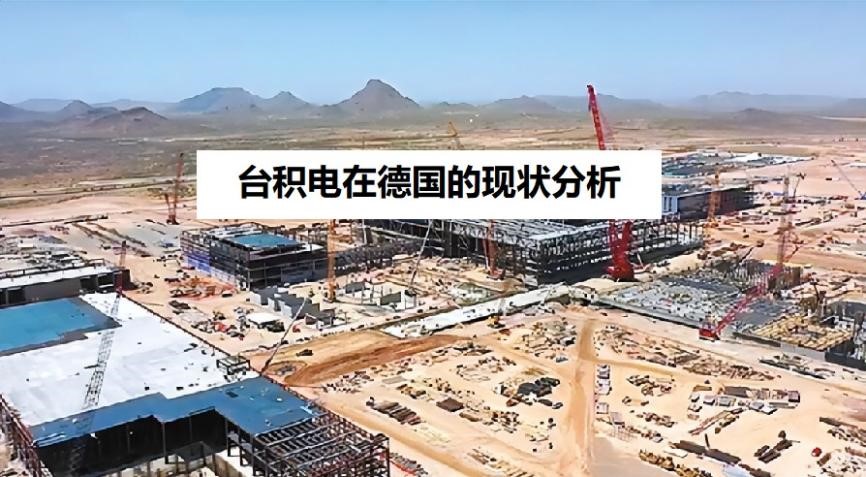TSMC, as the global leader in semiconductor foundry, has been attracting attention for its strategic layout in the world. In August 2023, TSMC announced its ambitious plan to build an advanced 12-inch wafer fab in Dresden, Germany, which is seen as the company's focus on the European market and a key step in its global strategic layout. However, recent news from Taiwan media shows that TSMC's development in Germany is not as smooth as expected, and China's overseas semiconductor network will try to deeply analyze TSMC's development in Germany from multiple angles and explore its challenges and possible response strategies.
1. Investment overview and strategic significance
TSMC's factory in Germany is part of the European Semiconductor Manufacturing Company (ESMC), a joint investment with Bosch, Infineon and NXP. This cooperation reflects TSMC's emphasis on the European market and its strategic layout in the global semiconductor industry. The Germany government has provided subsidies of up to 5 billion euros under the European Chips Act, demonstrating Germany's strong determination and strength in attracting high-tech manufacturing.
2. Technology and capacity planning
The Germany plant is expected to use 28/22nm planar CMOS and 16/12nm FinFET process technologies, with a monthly production capacity of about 40,000 12-inch wafers. These technologies are TSMC's core competencies in mature process technologies to meet the growing demand for semiconductors in the automotive and industrial electronics markets. Construction is expected to begin in the second half of 2024, with production expected to start by the end of 2027.

Figure: Analysis of TSMC's current situation in Germany
3. Challenges and concerns
While TSMC's Germany investment plan is highly anticipated, there are some serious challenges:
1. Cost issues: The cost of building a factory in Germany is expected to be extremely high, comparable to that of United States. TSMC has publicly stated that the starting cost of overseas fabs is usually higher than that of fabs in Taiwan, China. High costs can have an impact on the profitability and competitiveness of a project.
2. Talent shortage: Germany faces severe skills shortages and population decline, with a projected 200,000 fewer working-age population. More than 25,000 jobs were opened in Saxony last year, especially in the fields of electronics, computer science and software development.
3. Cultural differences and union issues: TSMC needs to adapt to Germany's working environment and strong union culture. Germany's strong trade unions may challenge TSMC's management and labor policies.
4. Supply chain ecosystem: Although the Dresden region already has a relatively complete semiconductor production chain and supply ecosystem, TSMC still needs to further integrate and optimize the supply chain to ensure production efficiency and cost control.
5. Market demand and competition: TSMC needs to understand the needs of the European market and maintain the competitiveness of its products and technologies. Driven by the rise of electric vehicles and autonomous driving applications, the automotive industry has a growing demand for chips.
Fourth, coping strategies
In the face of these challenges, TSMC needs to adopt a series of strategies:
1. Effective use of government subsidies: Use the 5 billion euro subsidy provided by the Germany government to reduce the initial construction cost and reduce financial pressure.
2. Talent Development and Recruitment Diversification: Cooperate with local educational institutions to train technical talents and recruit workers from overseas to solve the problem of talent shortage.
3. Cultural integration and flexible management: Strengthen communication with local trade unions, formulate flexible management strategies, and establish good labor-management relations.
4. Supply chain localization and deepening cooperation: Strengthen cooperation with local suppliers, deepen technical cooperation with partners, and optimize the supply chain.
5. Market research and continuous innovation: Deeply understand the market demand, continue to invest in research and development, and ensure that products and technologies meet the needs of the market.
V. Conclusions and Concerns
TSMC's development in Germany is a key step in its global strategic layout, but the challenges cannot be ignored. High costs, talent shortages, cultural differences, supply chain integration, and rapid changes in market demand are all issues that TSMC needs to take seriously. While the company has developed a series of response strategies, there is still uncertainty about whether these strategies will be effectively implemented and whether they will deliver the desired results.
We are cautiously optimistic about TSMC's future development in Germany. The establishment of the Germany plant is expected to strengthen the European semiconductor manufacturing ecosystem, create a large number of high-tech jobs, and meet the needs of the automotive and industrial electronics markets. However, if TSMC fails to respond effectively to these challenges, its investment in Germany could face significant risks and could even affect the company's leadership in the global semiconductor industry.
Therefore, TSMC's development in Germany is not only crucial for itself, but also has an important impact on the stability and development of the global semiconductor supply chain. Both the industry and investors should pay close attention to TSMC's progress in Germany, as well as its strategy and effectiveness in dealing with the challenges.






